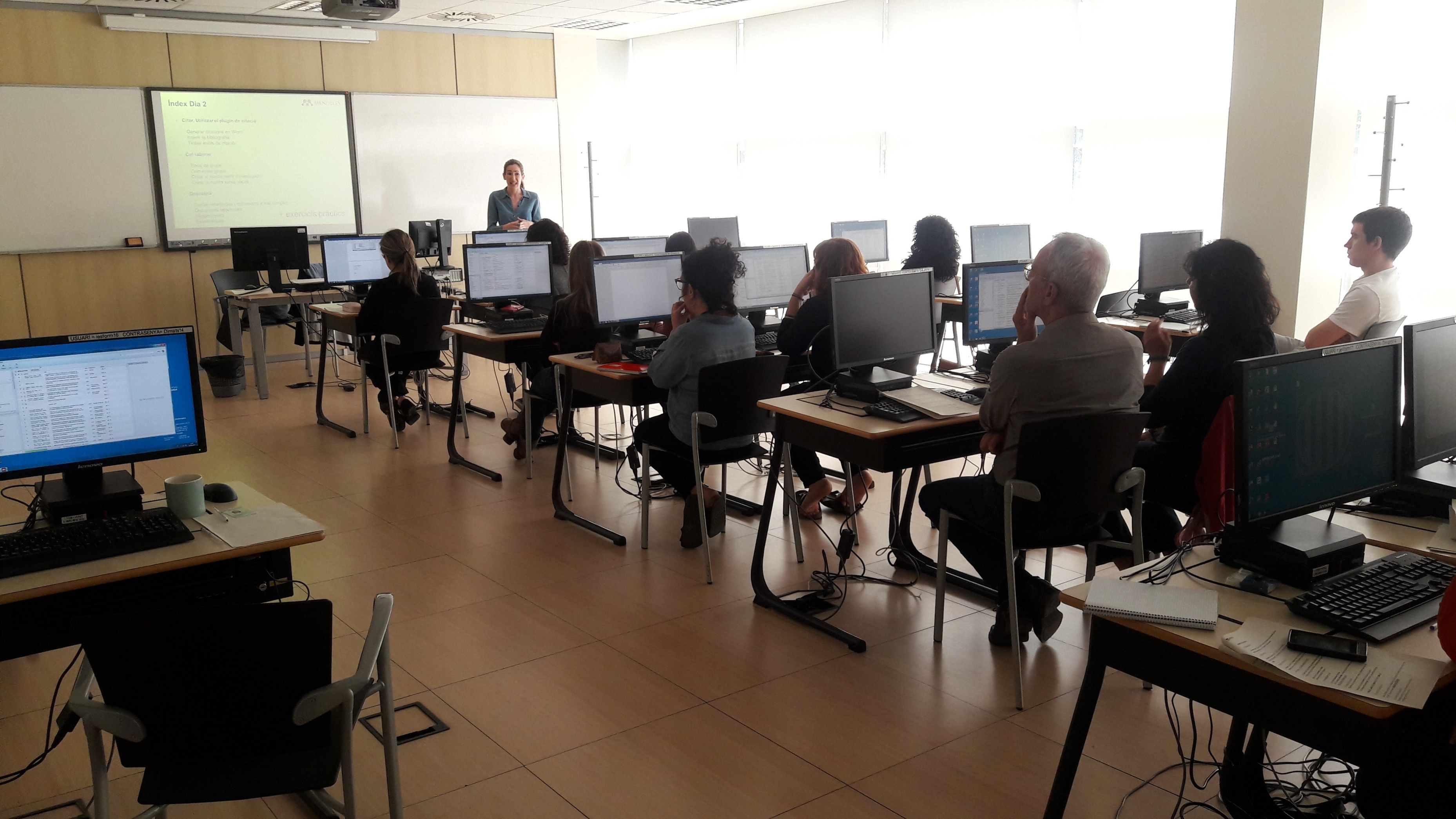
Last week, I had the pleasure of being in Barcelona leading a workshop about Mendeley to the staff at AQuAS. It took place on the 16 and 17 May and a total of 20 people attended among which there were researchers, librarians and administrative staff.
In this workshop, I talked about the features of Mendeley, which is basically a reference manager that allows us to manage a bibliography in an automated way, with the advantage of it being free multiplatform software which operates on the cloud. Thanks to the Web Importer plugin, we can automatically import references from the browser that we habitually use in a very simple way. Thus, together with other ways of adding information, we build up our library, which is not only able to contain references but also pdf documents that we can read directly thanks to the PDF Viewer. What is more, Mendeley extracts metadata from these documents so that we have all this data automatically available as a bibliographic reference.
We had a look at all the possibilities there are of organising our library and recovering information in an intuitive manner. Following that, I explained the features of the quotation plugin, which works both for Word as well as for LibreOffice and serves to facilitate the insertion of quotations in the text processor when we are writing up a project, an article, a book, a report, etc … It also allows us to generate a bibliography automatically, choosing the style of quote we want to use (Vancouver, APA, Harvard, or the specific style of a magazine with specific requirements for the bibliography).

Beyond all these features which are characteristic of many management tools (each with their own peculiarities), I wanted to explore the 2.0 philosophy that surrounds this tool in more depth because the truth is that Mendeley is more than a manager of bibliographic references. Firstly, because its mere existence is the result of collective intelligence as the Mendeley catalogue is made up of references provided by users and it is built by everyone together. Secondly, because it encourages collaboration and teamwork, and thirdly, because Mendeley also has a social network where we can create our researcher profile and connect with other people.

We thus saw the possibilities of creating groups to share references and documents, which can even contain annotations and highlighted text. This is without doubt a very interesting feature for research groups, although in the free version, this is limited to three users and to private groups.
Regarding the functionality of Mendeley as a social network, we saw the possibility of creating our profile as researchers, adding one’s own publications, which immediately become part of the Mendeley catalogue. This is a fantastic opportunity to improve online reputation by disseminating one’s papers or sharing them with groups to who they might be of interest. From here on, we can connect with other people having similar interests to ours, and see all their activity and news on the ‘feed’.
Lastly, we also saw the possibilities we have of discovering academic information on Mendeley. Using the references stored in our library, the tool gives us suggestions of other references that could be of interest. It also suggests people to follow and allows us to search for similar documents that we already have.
Apart from giving a detailed explanation of these features of Mendeley, we practised with exercises on the computer so as to take in all these concepts and the response of the attendees was very positive. In general, the tool seemed to be very intuitive and useful, especially in terms of working on the cloud from any place or device, having a repository of documents available and the ease of creating groups and networking.
Following is the presentation I used in case it can serve as a guide to readers:
Finally, this is to thank the AQuAS, the attendees for their interest and the Communications and Documentations Unit for organising this workshop .

Post written by Paula Traver (@paulatraver), health sciences information specialist and social media manager.
